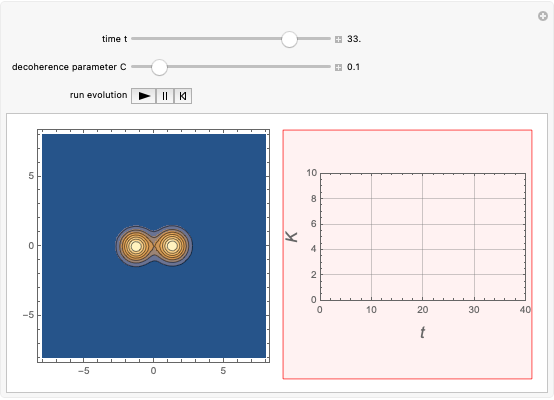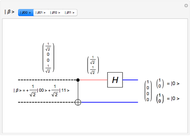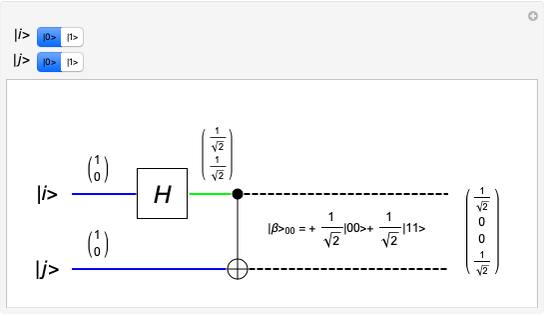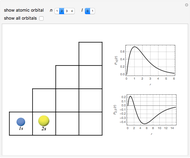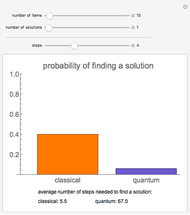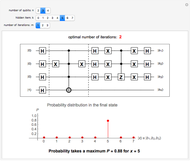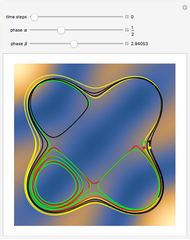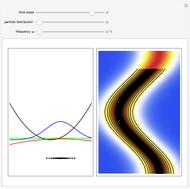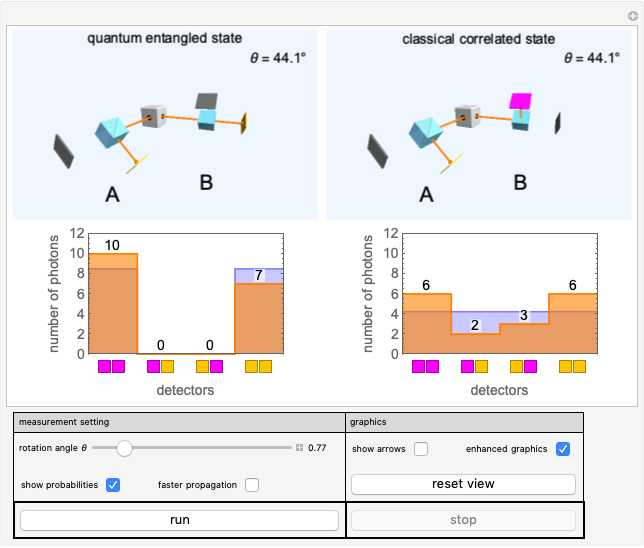Quantum Entanglement versus Classical Correlation

Requires a Wolfram Notebook System
Interact on desktop, mobile and cloud with the free Wolfram Player or other Wolfram Language products.
Quantum entanglement describes the very strong correlation that can exist in quantum systems. This Demonstration shows two simple experimental setups, in which pairs of polarized photons are generated by a source and the photons in each pair are subsequently detected in different polarization bases. The photons on the left are in the singlet state, which is entangled. The photons on the right are in the de-phased singlet state, which is only classically correlated. The entangled photons always end up in detectors of the same color—either both go to the orange detectors, or both to the magenta ones. The classically correlated photons, on the contrary, may also end up in detectors of different colors. The frequency of such events depends on the rotation angle  of the detectors.
of the detectors.
Contributed by: Jaroslav Kysela (February 2021)
Open content licensed under CC BY-NC-SA
Snapshots
Details
Quantum entanglement is a counterintuitive feature of quantum mechanics. It is a type of correlation that cannot be reproduced in classical physics. This Demonstration is intended to illustrate the effect of quantum entanglement in a simple experimental setup with pairs of photons.
Two identical setups are shown, in which pairs of photons correlated in their polarization are produced by sources placed at the center. The photons in each pair are subsequently detected by detectors  and
and  , both of which consist of a polarizing beam splitter with two screens. Both detectors can be rotated to measure the incoming photons in any basis of linear polarization.
, both of which consist of a polarizing beam splitter with two screens. Both detectors can be rotated to measure the incoming photons in any basis of linear polarization.
The source in the left scene produces photons in the singlet state  , which is entangled. As a result, the two photons exhibit very strong nonclassical correlations. This is manifested by the fact that no matter how rotated the detectors are, there are only two possibilities—either both magenta screens register photons, or both orange screens register photons. It never happens that detectors of different colors simultaneously register a photon. The magenta and orange colors are used here only as labels for detectors; they have no physical meaning.
, which is entangled. As a result, the two photons exhibit very strong nonclassical correlations. This is manifested by the fact that no matter how rotated the detectors are, there are only two possibilities—either both magenta screens register photons, or both orange screens register photons. It never happens that detectors of different colors simultaneously register a photon. The magenta and orange colors are used here only as labels for detectors; they have no physical meaning.
The source on the right produces photons in a mixed state  . This state is in a certain sense the closest non-entangled relative of the singlet state
. This state is in a certain sense the closest non-entangled relative of the singlet state  . This mixed state exhibits only classical correlations. For different rotation angles, the possible cases are when one magenta screen and one orange screen simultaneously register a photon. The probability of such an event varies as the angle
. This mixed state exhibits only classical correlations. For different rotation angles, the possible cases are when one magenta screen and one orange screen simultaneously register a photon. The probability of such an event varies as the angle  is varied.
is varied.
After you click the "run" button, photon pairs are continually generated by both sources and measurement statistics are collected. For a large enough number of detected pairs, the measurement statistics correspond to the probabilities of detecting individual polarization modes. Enable the "show probabilities" checkbox to see rescaled probabilities. Click the "stop" button to end the experiment. Enable the "faster propagation" checkbox to increase the speed of propagation of photons. The scenes can be rotated as with any other Wolfram Language 3D graphic. Click the "reset view" button to restore the default view point. When "enhanced graphics" is checked, the design of the source and that of the arrows (enabled by "show arrows") is shown in greater detail. The arrows show the sense in which the detectors are rotated.
Permanent Citation






